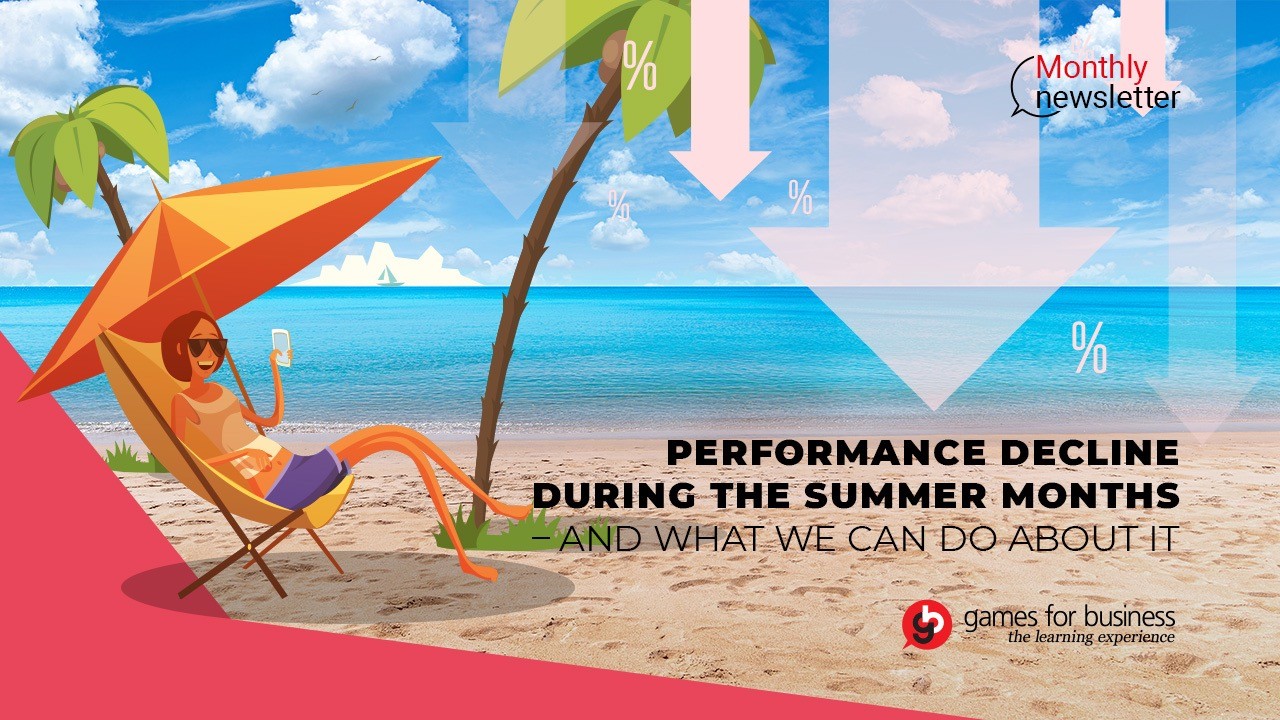
As summer arrives, not only does the weather change, but so does workplace dynamics. Many people notice that employees' concentration drops, deadlines feel less urgent, and overall productivity isn't at its usual level. As the temperature rises, our relationship with work tends to cool down... But is this just a hunch, or is there a real, measurable effect?
The answer is clear: the summer months do indeed cause a noticeable drop in performance, and this can have serious business consequences.
How Summer Impacts Workplace Efficiency - In Numbers
According to 2024 surveys, employee productivity drops by an average of 20% during the summer, and workplace attendance decreases by 19%. (Source: Cloverleaf) This data is especially concerning when we consider that research from the University of Chicago found that for every 1°C increase in temperature, there is an average 4% drop in performance.
During the summer months, when the temperature consistently exceeds the average by 8-10°C, this can lead to a 30-40% drop in efficiency. For a mid-sized company with 100 employees, this could mean a revenue loss of 15-20% in July alone - not including indirect costs such as:
- longer lunch breaks,
- more frequent sick leaves,
- higher employee turnover,
- declining customer experience.
According to Deseret News, employees' attention is 45% more likely to be distracted in summer: the presence of children at home, vacation plans, and the constant pull of social media all reduce focus. (Source: FastCompany)
What's Behind the Summer Performance Decline?
It has been shown that performance is not constant but follows weekly and yearly cycles, explained by the phenomenon known as entrainment (synchronization/capture): an individual's biological rhythm synchronizes with external environmental signals, adapting to cues from our surroundings, which influences both productivity and motivation levels. For example, Monday is typically considered a planning day - people are energetic and task-oriented. By Friday, however, we're already preparing for the weekend; motivation drops, the day becomes more relaxed, and productivity decreases.
According to experience, summer tends to resemble Fridays in terms of work patterns: the heat, longer days, and the general desire for travel and relaxation all point toward lower efficiency and a drop in performance. Additional "complicating" factors also contribute:
- Daily routines change - for example, shorter working hours and more frequent remote work,
- More colleagues are on vacation, slowing down decision-making and processes,
- Hot weather reduces sleep quality, which impacts cognitive performance,
- The "summer mood" psychologically lowers performance expectations - we tend to be more lenient with ourselves and with others.
Gamification - One of the Most Effective Solutions
What can we do to maintain efficiency? The answer isn't necessarily stricter control or setting new goals, but rather measures such as flexible working hours, scheduling important tasks for periods of peak performance, or - even in the long term - incorporating gamified tasks and work environments. Gamification is a proven method that uses game-like elements to increase intrinsic motivation, boost productivity, and simply make work more enjoyable.
According to 2025 research:
- 90% of employees working in a gamified environment feel more productive,
- Engagement increases by 48%, especially in hybrid work settings,
- Remote workers' motivation is 47% higher when supported with gamified tools. (Source: AmplifA)
Why Does It Work?
The motivational elements of games - such as instant feedback, lives, point systems, badges, leaderboards, and challenges - work just as effectively for workplace tasks as they do in video games or on social platforms:
- the competitive spirit is motivating and energizing,
- the playful experience makes tasks more engaging and easier to approach,
- it rewards achieved results, and
- it encourages people to return to the "game" again and again.
All of these help reduce summer distractions and maintain focus - even when the environment and general work morale are more relaxed than during the rest of the year.
A Good Example
One of our banking clients developed a training program aimed at improving customer experience and promoting a recently spotlighted banking product group. The training was hosted on the G4B gamified platform. Participation was voluntary, the program lasted six weeks, and participants had the chance to win valuable prizes.
Despite the warm weather in May, over 1,000 people registered, and more than 60% completed the training. Employees actively engaged in both playing and learning, with very low dropout rates during the course. In all aspects - graphics, usefulness, engagement, enjoyment, and willingness to use the platform again - the feedback was exceptionally positive. On a 6-point scale, all ratings were above 5, with several nearing 5.9.
Summary
Summer performance decline is a real phenomenon - but it's not an unavoidable fate. In addition to gamification, other solutions such as flexible working hours, air-conditioned environments, or scheduling more demanding tasks for the peak-performance hours can also help. The key is recognizing that the summer months require a different approach.
If you'd like to learn how gamification can be applied in your company to counteract the summer performance dip - or if you're curious about the specific solutions we can develop for your organization - book a free consultation with us at the link below:

